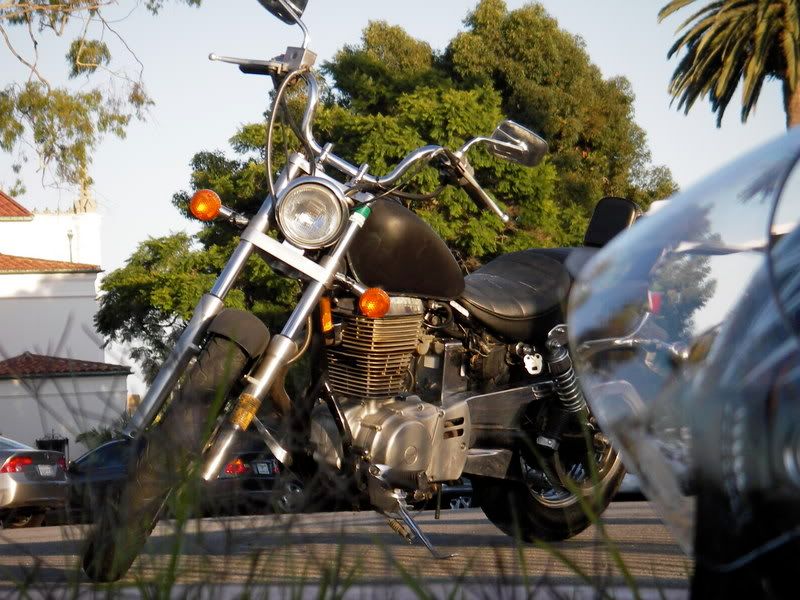Bobbert
Serious Thumper
     Offline
Offline

CHOP IT
Posts: 836
Los Angeles, CA
Gender: 
|
Follow me here, this is the whole safety system in order of current flow. It's a chain that starts at the side relay and ends at the decomp control.
Overview:
Battery > Ignition > Side Relay (ground by kickstand up and/or in neutral) > Kill Switch > Starter Switch > Clutch Switch > Decomp Controller > Starter Relay
Side Relay
I believe that they chose to wire three of the four wires orange to prevent tampering. I'm going to use the Clymer as my reference. From left to right:
ORANGE 1: 12V main power
ORANGE 2: round through either/both side stand switch or neutral switch
ORANGE/BLACK: 12V sent out to kill switch
ORANGE 3: 12V main power
When the relay is closed, current passes to the kill switch by connecting ORANGE 3 to ORANGE/BLACK.
The relay is closed when current passes through ORANGE 1 to ORANGE 2, whose connection to ground is interupted by the kickstand switch and the neutral switch, both of which are normally left open. With no ground, the current sits in ORANGE 1 and ORANGE 2 (more accurately, there is no current.)
If either or both switches are closed (putting the kickstand up or being in neutral,) the ground is completed and current flows from ORANGE 1, through the relay, through ORANGE 2, and out through one or both of the "grounding" switches. This movement of current closes the relay between ORANGE 1 and ORANGE/BLACK and allows current to flow to the kill switch.
If you want to eliminate the relay and side switch: Connect ORANGE/BLACK from the kill switch directly to power. Remove Side Relay and kickstand switch. ORANGE 2 will need to be removed from its connector to the incorrectly labeled"side stand diode" which is actually the [i]neutral light diode, which you will need if you want a working neutral light.[/i]
Kill Switch
ORANGE/WHITE- 12V sent to starter switch, ignition coil and Ignitor
ORANGE/BLACK- 12V in from side relay
Pretty simple. ORANGE/WHITE splits off to power the starter switch, ignition coil and Ignitor. When the bike is running, it needs constant power to the Ignitor and ignition coil. Cut the power to these, no more spark.
Starter Switch
Normal
YELLOW/WHITE- 12V sent to horn, pass switch
ORANGE- 12V main power (for horn, pass)
Pushed
ORANGE/WHITE- 12V in, sent from kill switch
GREEN/YELLOW- 12v sent to the clutch switch
If there is a current through all the previously listed components, the starter switch sends current to the clutch switch
To Simplify (if you move the switch): Disconnect YELLOW/WHITE and splice into main power. Ditch ORANGE.
Clutch Switch aka Clutch Lever Position Switch
GREEN/YELLOW: 12V sent from starter switch
GREEN/YELLOW: 12V sent to decomp control
This is a simple switch. It just prevents starting with the clutch lever out. This is done because the current can reach this far as long as the kickstand is up. (see side relay)
|
|
Back to top
|
« Last Edit: 01/08/10 at 09:54:53 by Bobbert »
In progress- 1996 Savage: solo seat, pod filter, open exhaust, and custom bars, fender, wiring, paint.
 IP Logged IP Logged
|

